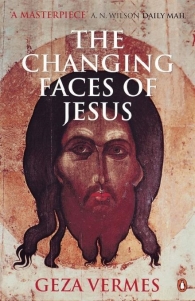

The great structure built by King Herod in Jerusalem was an empty shell: God did not live there but among his faithful servants in the desert.

The authors of the Dead Sea Scrolls thought of their community in its remote desert setting as the 'real' temple.

This connects with an aspect of the Jewish world of Jesus's day that Vermes skirts a little. Each effort generates more unfinished business and the impetus is not to clarify ideas for their own sakes but to do justice to the sense that whatever Jesus introduces into the world is new and awkward enough to need a new vocabulary. Someone reading the convoluted texts of early Christian argument might well see them less as a series of baroque elaborations on a theoretical theme than as a series of attempts to capture an elusive but inescapable insight. Despite Vermes's skilful argument, it is hard simply to deny that Christian scripture does show people praying to the exalted Jesus from very early indeed. Everyone at the Council of Nicaea believed they were defending immemorial tradition and they were right to the extent that extravagant language about who Jesus 'really' was goes back a long way. Vermes shows how the sort of thing that was being claimed in the creed of 325 had very clear antecedents within a century of Jesus's crucifixion – so that it is odd to speak of a 'revolutionary' position advanced in 325. The creeds are the product of a very secular chain of political and intellectual influences, serving to obscure the historical core of what was new in Jesus's life and work. If Vermes is wholly right, any claims about the 'revealed' authority of traditional Christian faith are pretty dubious. The language used about Jesus never goes beyond that appropriate to 'a man of high spiritual dignity'. Parts of the family open up to non-Jews, others don't. 'Neither biblical nor post-biblical Judaism,' Vermes notes, 'make of the young an object of admiration.' The early community of Jesus's followers is shaped by charismatic phenomena – healing, prophetic ecstasy – tight corporate discipline, the expectation of the end of the world, and certain social rituals that reinforce the strong family-like bonds of the group. Perhaps the most distinctive feature of all is the way in which Jesus puts at the centre of his world the child, the one who responds without reserve to an unreserved gift of love. In the beginning, Jesus of Nazareth, a charismatic wonder-worker whose profile has some parallels with fairly well-known Jewish saints and sages of his period, proclaims a radically simplified version of the law of Moses and the religion of the Hebrew prophets, with a special stress on the claims of those who think of themselves as having no claims – the destitute, the marginal, the failed. The shape of the narrative as he tells it is one that most Christian scholars will recognise.


 0 kommentar(er)
0 kommentar(er)
